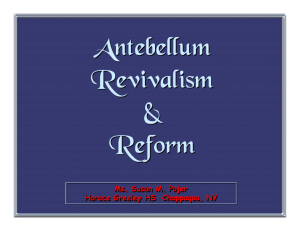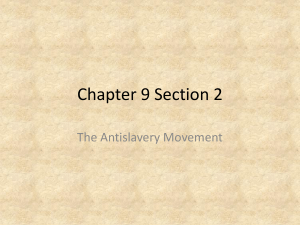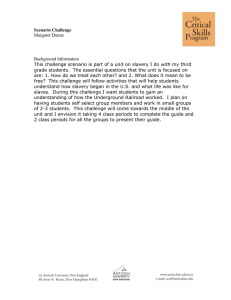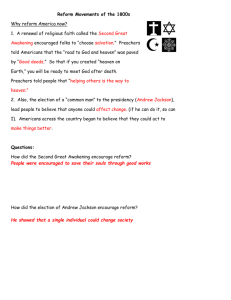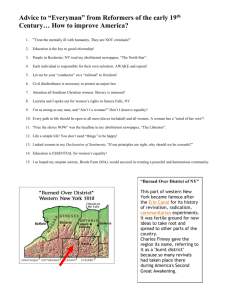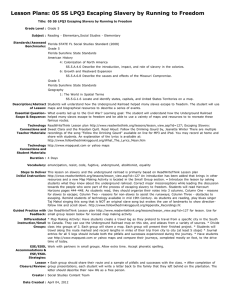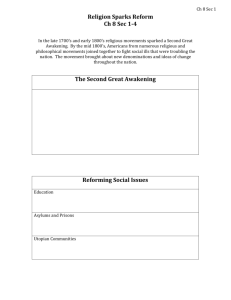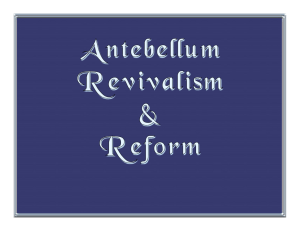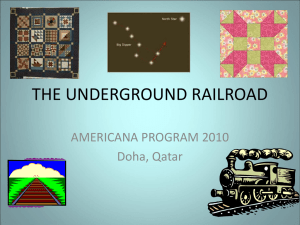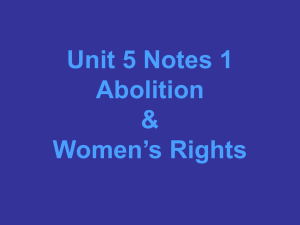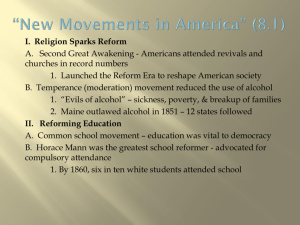AntebellumReformers
advertisement
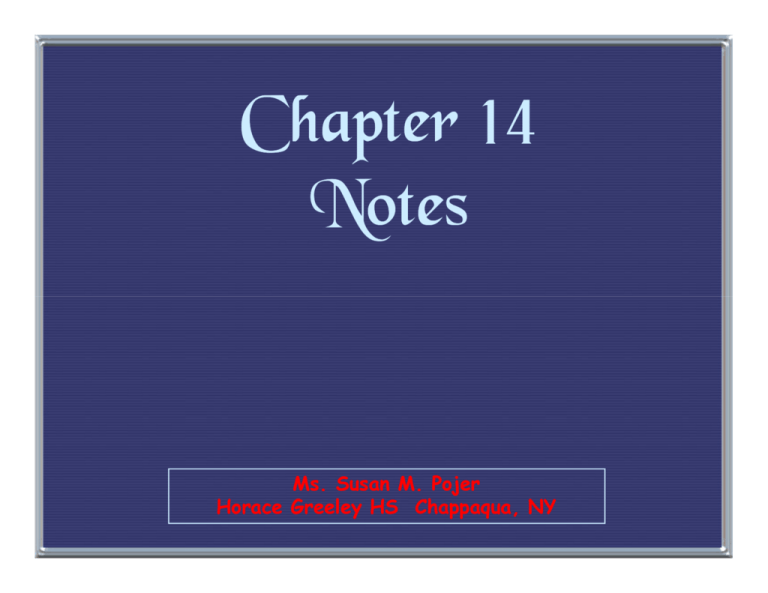
Chapter 14 Notes Ms. Susan M. Pojer Horace Greeley HS Chappaqua, NY 1. T he Second Great Awakening – series of religious revivals that swept over the US during the early to mid 1800’s “Spiritual Reform From Within” [Religious Revivalism] Social Reforms & Redefining the Ideal of Equality Temperance Education Abolitionism Asylum & Penal Reform Women’s Rights Second Great Awakening Revival Meeting Transcendentalism (European Romanticism) e Stress the relationship between humans and nature and the importance of individual conscience. e “Transcend” the limits of intellect and allow the emotions, the SOUL, to create an original relationship with the Universe. Transcendentalist Intellectuals/Writers writer that stressed the relationship between humans and nature, spiritual over material things, and the importance of an individual conscience Ralph Waldo Emerson Nature (1832) Self-Reliance (1841) Henry David Thoreau Walden (1854) Resistance to Civil Disobedience (1849) “The American Scholar” (1837) R3-1/3/4/5 T he Transcendentalist A genda Give freedom to the slave. Give well-being to the poor and the miserable. Give learning to the ignorant. Give health to the sick. Give peace and justice to society. Utopian Communities – communities based on being the perfect society Prison Reform and improved treatment for the mentally ill Dorothea Dix (1802-1887) 1821 first penitentiary founded in Auburn, NY R1-5/7 Dorothea Dix Asylum - 1849 5.Temperance Movement – the movement to stop the manufacture and drinking of alcohol. 1826 - American Temperance Society “Demon Rum”! Frances Willard R1-6 The Beecher Family Annual Consumption of Alcohol „T he DrunkardÊs Progress‰ From the first glass to the grave, 1846 Educational Reform e MA e By always on the forefront of public educational reform * 1st state to establish tax support for local public schools. 1860 every state offered free public education to whites. * US had one of the highest literacy rates. Early 19c Women 1. Unable to vote. 2. Legal status of a minor. 3. Single could own her own property. 4. Married no control over her property or her children. 5. Could not initiate divorce. 6. Couldn’t make wills, sign a contract, or bring suit in court without her husband’s permission. W hat It Would Be Like If Ladies Had T heir Own Way! R2-8 Cult of Domesticity = Slavery The 2nd Great Awakening inspired women to improve society. Lucy Stone Angelina Grimké Sarah Grimké e Southern Abolitionists R2-9 e American Women’s Suffrage Assoc. e edited Woman’s Journal R2-6/7 WomenÊs Rights 1840 split in the abolitionist movement over women’s role in it. Lucretia Mott Elizabeth Cady Stanton 1848 Seneca Falls Convention - Declaration of Sentiments -1st women’s rights convention - Most controversial issue – suffrage/voting Abolitionist Movement – movement to free the slaves e 1816 American Colonization Society was created (wanted gradual, voluntary emancipation. Abolitionist Movement e Create a free slave state in Liberia, West Africa. e No real anti-slavery sentiment in the North in the 1820s & 1830s. Gradualists Immediatists Anti-Slavery Alphabet W illiam Lloyd Garrison (1801-1879) e Slavery & Masonry undermined republican values. e Immediate emancipation with NO compensation. e Slavery was a moral, not an economic issue. R2-4 Harriet Beecher Stowe • Uncle Tom’s Cabin – Anti slavery novel about the cruelty of slavery T he Liberator Premiere issue January 1, 1831 R2-5 Black Abolitionists David Walker (1785-1830) Fight for freedom rather than wait to be set free by whites. Frederick Douglass (1817-1895) -African American abolitionist, speaker and writer who escaped from slavery. 1845 The Narrative of the Life Of Frederick Douglass R2-12 1847 “The North Star” Sojourner Truth (1787-1883) or Isabella Baumfree 1850 The Narrative of Sojourner Truth - Made speeches about her life as a slave R2-10 Harriet Tubman (1820-1913) e Most famous “conductor” on the Underground Railroad. e Helped over 300 slaves to freedom. e $40,000 bounty on her head. e Served as a Union spy during the Civil War. “Moses” Leading Escaping Slaves Along the Underground Railroad T he Underground Railroad -a series of escape routes for slaves from the South. - It was not underground and it was not a railroad. T he Underground Railroad e “Conductor” ==== leader of the escape e “Passengers” ==== escaping slaves e “Tracks” ==== routes e “Trains” ==== farm wagons transporting the escaping slaves e “Depots” ==== safe houses to rest/sleep
